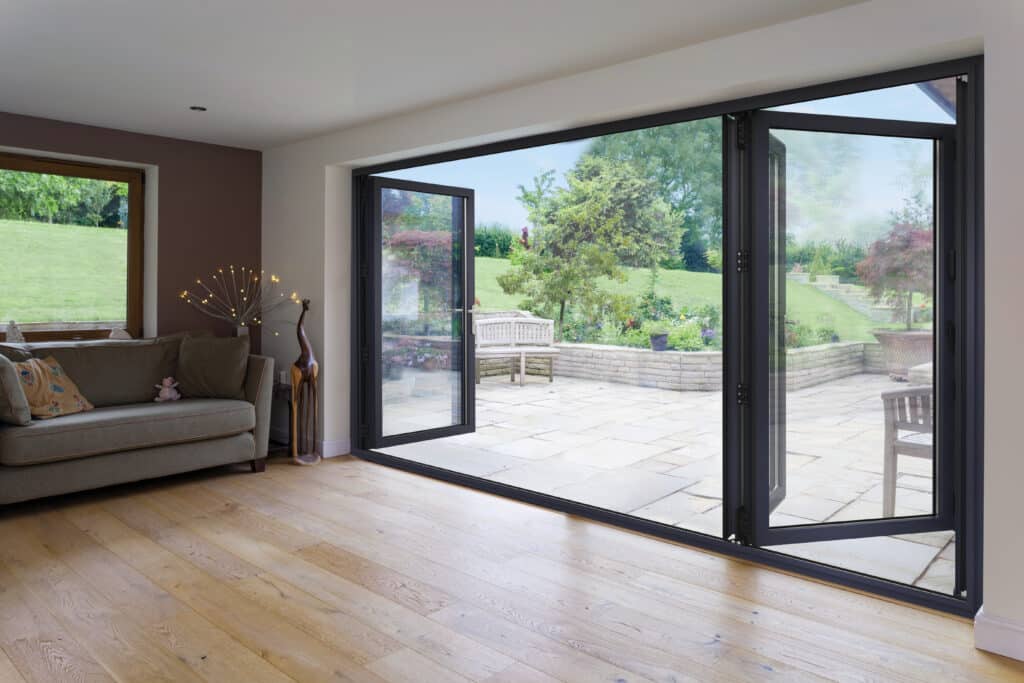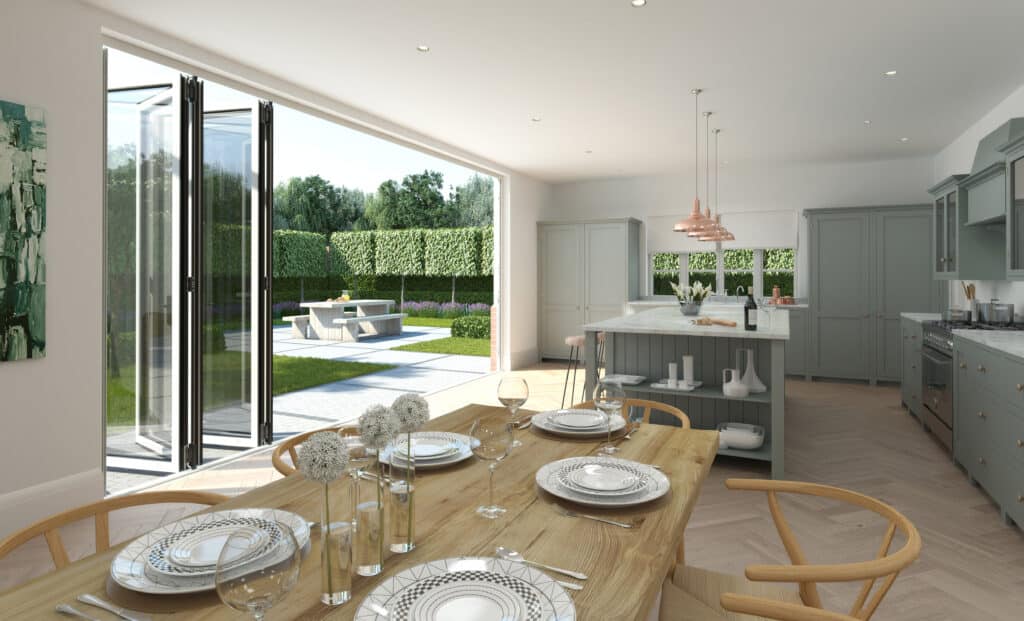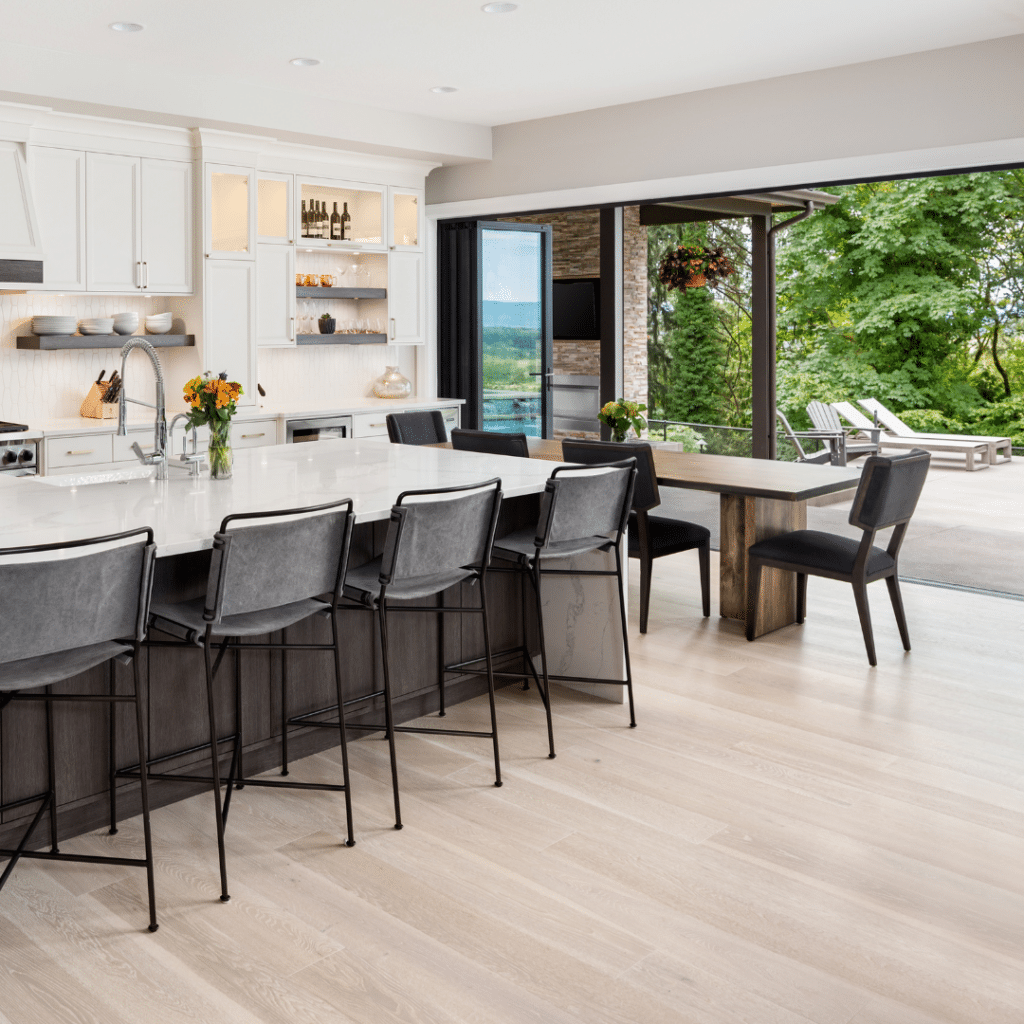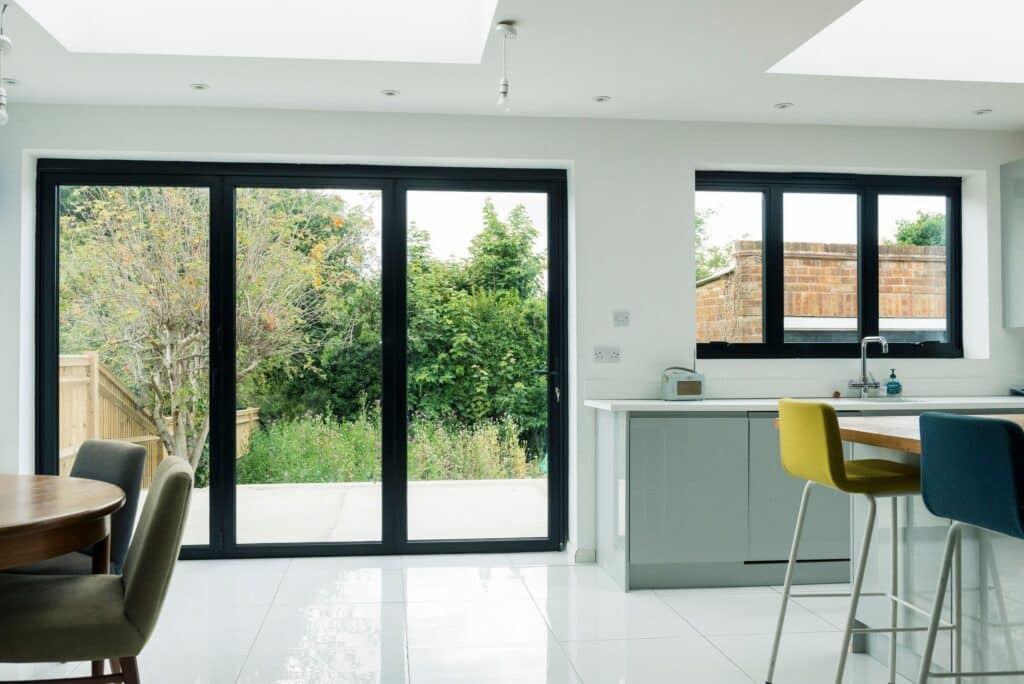
Aluminium vs uPVC: What’s best for your bifold doors?
Bifold doors are a fantastic addition to your home, bringing a whole host of benefits. Thanks to their streamlined design and stackable panes, they open up your home, maximise the amount of natural light and offer uninterrupted views, whether open or closed. They not only enhance your quality of life; their eye-catching contemporary aesthetic makes them a stylish feature.
Bifold doors tend to be made from either uPVC or aluminium. Both materials have their pros and cons, so we’re going to take a closer look at each one.

Cost conscious
When choosing new doors, cost is usually the first consideration. uPVC is definitely the more budget-friendly option here. However, there’s more to think about than just the upfront costs. Aluminium may cost more initially but it also lasts longer and you’re likely to experience far fewer issues that may require a service call. uPVC Bifold doors have a lifespan of around 20 years, after which they’ll need replacing, whereas aluminium will last up to 45 years. In short, you can potentially avoid the additional costs of maintaining or replacing your doors if you invest in aluminium.
It’s also worth considering the impact your bifold doors will have on your overall property value. Potential buyers are more likely to be wooed by high quality, long-lasting fixtures.

Style it out
Another important consideration is aesthetics. No-one wants their home to catch the eye for all the wrong reasons. Aluminium has a clear advantage over uPVC here. Their sleek aesthetic is very much on trend. With slim frames that can support large panes of glass, they do a better job of dissolving the barrier between inside and out. This means more natural light, expansive views, and a greater sense of space. Aluminium bifolds are also more customisable, with a wider range of colours and finishes. You can choose from almost any RAL colour, whether that’s playing it safe with classic shades or going bold.
On the other hand, uPVC bifolds have thicker frames and therefore don’t let in as much light. They’re also more limited when it comes to customisation, although you do have the option of a wood effect finish, which can’t be achieved with aluminium. So, if you’re looking for a natural aesthetic, uPVC may be the best choice. It’s also worth bearing in mind that white uPVC can look tired pretty quickly and may even develop a yellowish hue if it’s constantly exposed to strong sunlight.

Time is free but priceless
In our fast-paced lives, the last thing anyone wants is to spend more time than necessary on cleaning and DIY. This is where aluminium bifolds really come into their own. We’ve already mentioned how durable they are but they’re also low maintenance, particularly during the summer months. Aluminium is much more resistant to UV rays and avoids the problem of thermal expansion. “What’s thermal expansion?” we hear you ask. This is when material expands if exposed to heat – and it’s something uPVC is prone to doing. This makes uPVC bifolds a bit of a hassle in hot weather. The frames can expand if they get too hot and you may find yourself struggling to open or close the doors. You can always try workarounds like spraying the frames with cold water but let’s be honest, who really wants to spend time wrestling with bifolds when all you want to do is lock up and go to bed. You also risk damaging your door if you apply a bit too much brute force.
uPVC can do a better job of keeping your home warm in winter, thanks to this thermal efficiency. Heat passes through aluminium more easily, so there’s a small chance that your aluminium bifolds aren’t quite as energy efficient. This doesn’t have to be the case, however. Most aluminium bifolds come with a thermal break, which reduces heat loss. The frames are also better suited to triple glazing, thanks to their extra strength.
There’s also the issue of cleaning. White uPVC can attract dirt and involves a bit more elbow grease when keeping it clean. On the other hand, aluminium doors only require a wipe down with soap and water.

Our recommendation?
Overall, aluminium bifolds have the edge when it comes to aesthetics and practicality. They may cost more upfront but it’s an investment worth making. uPVC bifolds may appear to be a budget-friendly option but you could find yourself missing the quality-of-life benefits that come with aluminium. Contact our team to learn more about how aluminium Bifold doors can enhance your home.